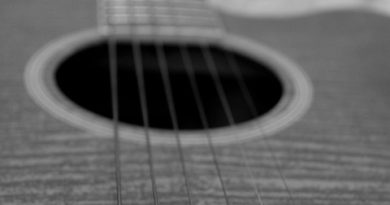Master Fingerstyle Techniques with These Essential Guitar Tips
Master Fingerstyle Techniques with These Essential Guitar Tips
Fingerstyle guitar playing is a popular technique among guitarists that allows them to create rich, melodic sounds without the use of a pick. Whether you are a beginner looking to improve your fingerstyle skills or an experienced guitarist looking to take your playing to the next level, these essential tips can help you master fingerstyle techniques and improve your overall guitar playing.
1. Understand the Basics of Fingerstyle Technique
Before diving into more advanced fingerstyle techniques, it is important to have a solid understanding of the basics. Start by using your thumb to pluck the bass strings (typically the E, A, and D strings) and your index, middle, and ring fingers to pluck the higher strings (G, B, and high E strings). Practice playing simple patterns using each finger to develop independent control and precision.
2. Focus on Finger Independence
One of the key elements of mastering fingerstyle guitar playing is developing finger independence. This means being able to control each finger individually and accurately. Practice exercises that focus on strengthening and coordinating each finger, such as playing arpeggios or scales with each finger individually.
3. Learn Proper Hand Position
Proper hand position is crucial for achieving a clear and consistent sound when playing fingerstyle guitar. Make sure your fretting hand is positioned correctly on the neck of the guitar, with your fingers hovering over the frets. Your picking hand should be relaxed with your wrist slightly bent and fingers positioned over the strings at a comfortable angle.
4. Experiment with Different Fingerstyle Patterns
There are countless fingerstyle patterns that you can incorporate into your playing to create a variety of sounds and textures. Experiment with different patterns, such as Travis picking, arpeggios, and alternating bass lines, to find what works best for your playing style. Practice each pattern slowly and gradually increase the speed as you become more comfortable.
5. Practice Good Rhythm and Timing
Rhythm and timing are essential components of fingerstyle guitar playing. Practice playing along with a metronome to improve your sense of timing and develop a steady rhythm. Focus on keeping a consistent tempo and playing each note evenly to create a smooth and cohesive sound.
6. Develop Dynamic Control
One of the advantages of fingerstyle guitar playing is the ability to control the dynamics of your playing by adjusting the pressure and angle of your fingers. Practice playing with varying levels of intensity and experiment with different finger placements to create a range of dynamics in your playing. This will help you convey emotions and add depth to your music.
7. Study the Masters
One of the best ways to improve your fingerstyle techniques is to study the techniques of master fingerstyle guitarists. Listen to and analyze recordings of renowned fingerstyle players, such as Tommy Emmanuel, Chet Atkins, and Andy McKee, to learn from their unique styles and approaches to fingerstyle playing. Try to emulate their techniques and incorporate them into your own playing.
8. Focus on Tone and Articulation
Achieving a rich and expressive tone is essential for mastering fingerstyle guitar playing. Experiment with different picking techniques, such as using your nails or fingertips, to find the tone that best suits your playing style. Focus on articulating each note clearly and using dynamics to create a dynamic and engaging sound.
9. Practice Regularly
Like any skill, mastering fingerstyle guitar playing takes time and dedication. Make a consistent practice routine and set aside time each day to work on your fingerstyle techniques. Focus on specific exercises and techniques to improve your playing and gradually incorporate them into your musical repertoire.
10. Be Patient and Persistent
Mastering fingerstyle guitar techniques is a challenging but rewarding process. Be patient with yourself and stay persistent in your practice. It may take time to develop the dexterity and precision needed for fingerstyle playing, but with dedication and perseverance, you can achieve mastery of this versatile and expressive guitar technique.
In conclusion, mastering fingerstyle techniques requires a combination of technical skill, musical understanding, and creative expression. By following these essential tips and practicing regularly, you can improve your fingerstyle playing and take your guitar skills to new heights. Experiment with different techniques, study the techniques of master fingerstyle players, and focus on developing finger independence, dynamics, and tone to create your own unique fingerstyle sound. With dedication and practice, you can become a proficient and expressive fingerstyle guitarist.






